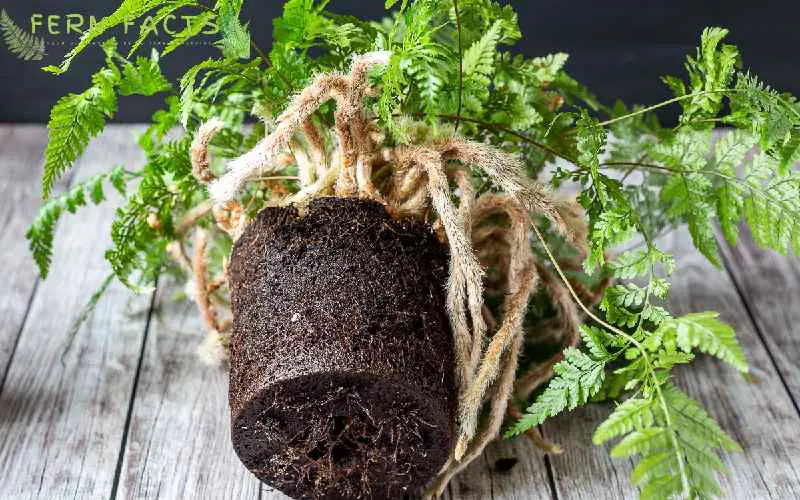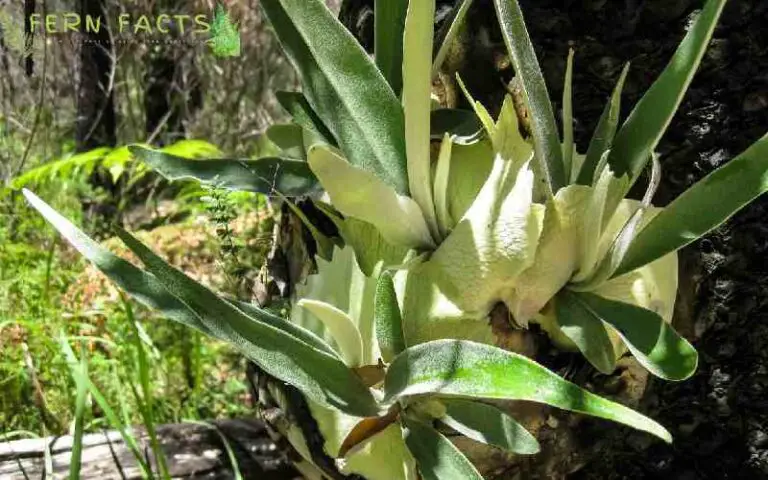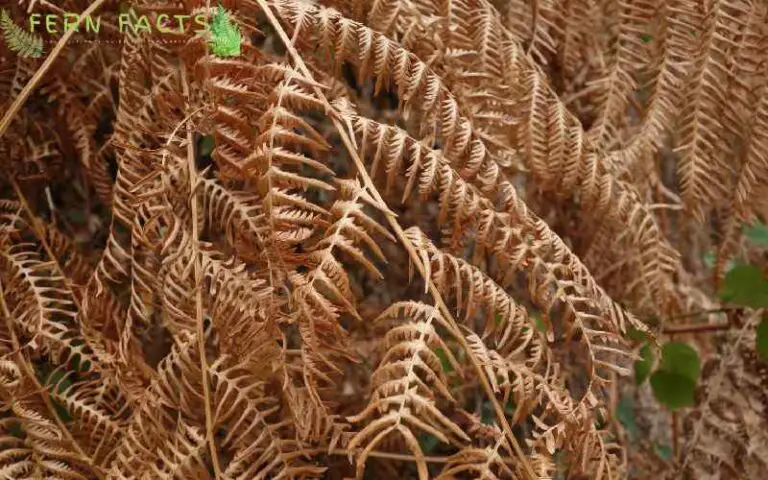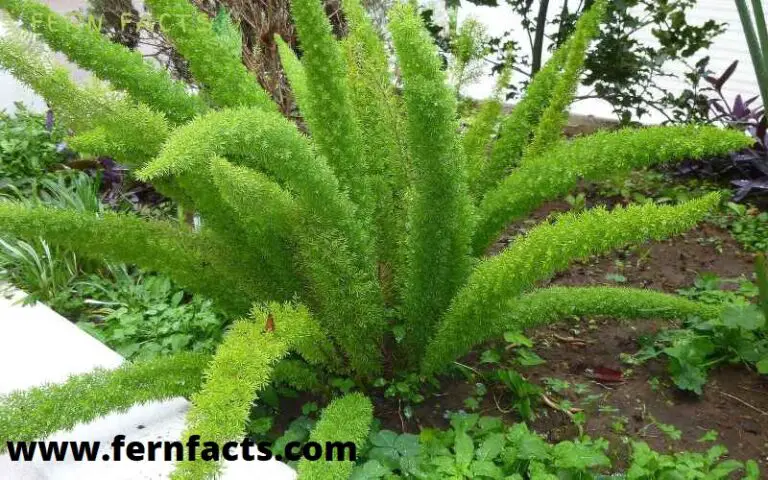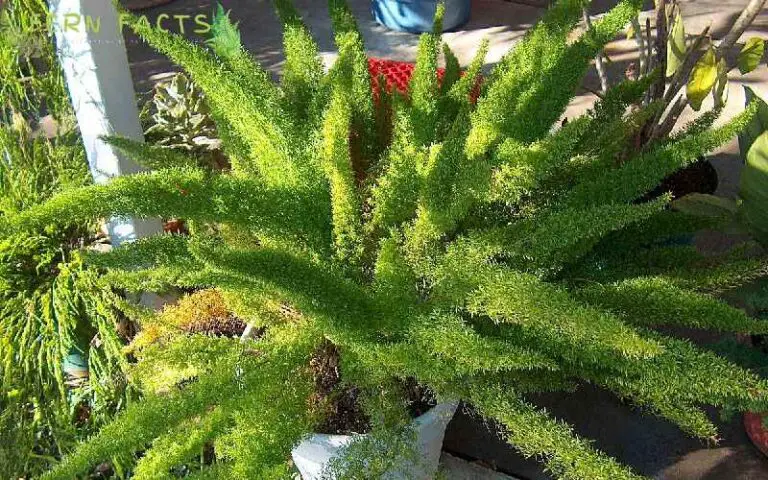Rabbit’s Foot Fern: Complete Guide
Rabbit’s foot ferns are the ferns that have fury and brown-yellow rhizomes. These ferns are used in hanging baskets on the balcony or corridor for decoration.
Because these ferns have round, bushy looks that create wholesome looks in the house. If you are wondering about buying these ferns for your house or your garden’s land, then this article will be a savior for you.
In this article, I’ll illustrate the overall idea about these rabbit foot ferns regarding their characteristics, their different varieties, and so on.
Besides, I’ll provide you with some guidelines and tips for do’s and don’ts so that you can grow and plant these ferns in your house without having any difficulties. So, let’s start with an overview of the characteristics of rabbit feet.
Overview of Rabbit Foot Fern
- Botanic name: Davallia denticulata
- Common name: Rabbit’s Foot fern, here’s Foot, squirrel foot, deer’s foot
- Family: Davalliaceae
- Native range: Asia, Africa and Europe
- Plant: Perennial
- Height: around 6 to 36 inches
- Wide: 12 to 40 inches
- Shade: partial sun
- Soil: moist loamy
- Soil pH: acidic, neutral
- Hardiness zone: 10, 11, 12
- Toxicity: non-toxic
Rabbit’s Foot ferns are perennial plants that frond-like rabbit Foot shapes. These ferns can grow from scaly rhizomes, which are covered with fine fur. This fur looks like a mat of hair. In general, they can grow up to 2 feet in height.
All about Rabbit Foot ferns
Rabbit’s Foot ferns are furry, brown, and yellow rhizome ferns whose fronds resemble the foot of the rabbit.
They are native to East Asia, Africa, and Europe continents. Similarly, they can also be found in Fiji island in Oceania.
Their ideal temperature would be around 60 to 75°F. However, these rabbit foot ferns can’t tolerate cold or survive below 55°F or 13° C.
You can keep these ferns both inside or outside of your house. Even these ferns are the best for hanging or potting as they can expose their hairy roots and fronds out of the container, which will give them a bushy appearance.
Additionally, these ferns are fond of a humid atmosphere. That’s why you need to keep them in a shady place out of direct sun exposure.
Similarly, their soil would be acidic neutral, which will help these rabbit foot ferns grow and thrive.
Types of Rabbit Foot Ferns
Although this fern is one of the subspecies of ferns, these rabbit foot ferns have different variables and categories.
Davallia fejeensis (Davallia solida var. fejeensis): These ferns are among the most well-known and have the maximum space on the earth. They are often called the rabbit’s foot fern.
Similarly, they are also likely to be cultivated in rural areas. These ferns can grow around 18 inches in height.
Hare’s foot fern (D. canariensis): This subcategory can grow around 20 inches in height and 40 inches in width. Their rhizome roots are slightly longer than the usual ones.
Squirrel’s foot ferns (D. trichomanoides) are usually shorter fronds than ordinary ferns. And so, they have smaller rhizomes. These ferns can grow up to 6 inches in height.
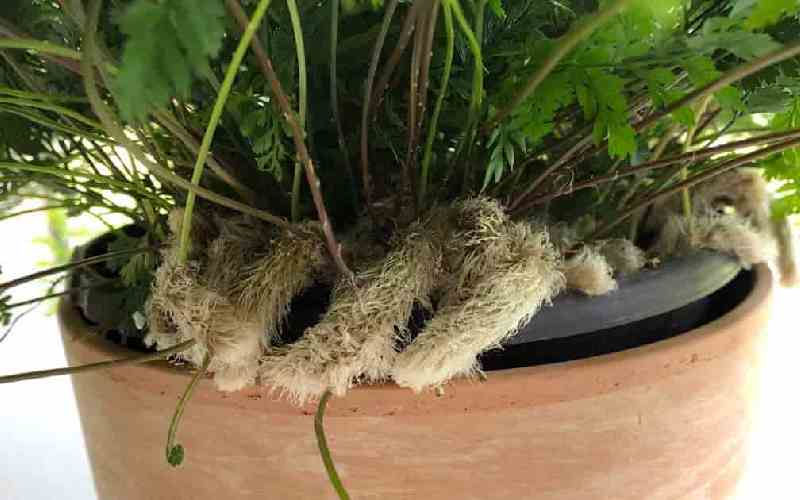
Rabbit Foot Ferns Care and Guidance
Most of the ferns require less care and maintenance to grow and thrive. These rabbit’s foot ferns crave less care and maintenance.
From the below-mentioned guidelines, you can easily supervise your Rabbit’s foot ferns at your house.
Light
These rabbit’s foot ferns can grow best in a filtered or dappled atmosphere. Therefore, you can place your ferns in the North or east-facing window.
Be careful about not exposing them to direct sunlight. It can harm your plant’s roots or burn out their fronds. Additionally, you can grow them in article lights as well. They are well adapted to artificial lighting.
Soil
For their soil mixture, you can make their soil with loam soil with an abundance of peat. Try to maintain the acidic balance of your soil.
And so, a peat-based soil mixture can naturally enrich the quality of the soil’s nutrients and microorganisms.
Water
These rabbit’s foot ferns are fond of moist soil. Therefore, you must water these ferns’ rhizomes daily or consistently.
Never let their rhizomes dry out because of less watering. It might harm their roots and soil as well. Eventually, extra dryness can kill the plants.
However, they don’t tolerate logged water in their soil, thus you need to keep the soil moist rather than overly soaked.
It would be best if you also grasped their dormant stage between October and March. In that stage, your plants will go into a semi-dormant phase.
In this stage, your plants somehow require less watering than usual.
Fertilizer
You can give liquid fertilizer once a week to your Rabbit’s foot ferns. Try to maintain or feed them during their growing seasons, which will help them grow and be nourished.
You can follow the label instructions given on the package for the instructions.
Make sure, in between the late fall to spring, you can reduce the feeding process as it’s their dormant stage. At that phase, they will require less feeding and fertilizer.
Temperature and Humidity
These rabbit’s foot ferns prefer temperatures between 60 to 75°F or 15 to 24°C. Additionally, they can’t tolerate temperatures lower than 55°F or 13°C.
Therefore, try to keep the temperature above 60°F so your F can thrive fully. However, they are less bothered about humidity. Still, you can mist their fronds if you observe fronds are dehydrated or become dull.
Pruning
These rabbit foot ferns need less pruning and trimming. That’s why, during their growing seasons, you can remove the dead fronds or dull fronds.
Other than that, they don’t need much pruning and grooming.
Overwinter care
These rabbit foot ferns are not highly sensitive during winter as they go dormant. That’s why they don’t need much care and attention during that period.
So you can be a little careless in those seasons. Similarly, you can reduce the watering and feeding process of your ferns as their growth eventually slows in those seasons.
How to Propagate Rabbit’s Foot Ferns
You can quickly propagate these ferns by cutting their rhizomes into two parts. You can even get variable rhizomes from the main rhizomes of the plants.
To do Propagating, you have to take sterilized and sharpened pruning tools. Later, cut the rhizome about 2 to 3 inches with a frond attached to it.
After that, you need to make the soil. Try to take a small container with peat-based potting soil mix. Lay the plant’s rhizomes on the surface and try to pin it down with a small wire loop.
Lastly, water the soil and maintain the moisture in the soil so that new plants get enough hydration through the soil. You can mix the potting in a plastic bag and keep it under indirect sunlight.
If you observe any new fronds or leaves, that means the roots are well-established and healthy.
Common Pests and Problems
Just like other ferns, these rabbit foot ferns are also sensitive to pests, diseases, and other problems. By taking care of them and troubleshooting, you can make them thrive in your house.
Pests and Diseases
Rabbit’s Foot fern are very sensitive to aphids, mealybugs, Whiteflies, and scales. If you observe this kind of pests around your plants, then try to infest them as soon as possible.
You can also use horticultural oil for your plants. These can keep your plants away from those pests and bugs.
Common Problem
These rabbit’s foot ferns are fond of careful touch. That’s why be gentle and have a soft or careful touch. This will help you have healthier rabbit foot ferns in your house.
Burnt Fronds or Scorched Fronds
Similarly, these ferns get yellow and pale very easily. That’s why you need to make sure whether the air or soil is too dry or not. Make sure to balance the temperature and humidity to keep your ferns warm and moist.
Additionally, excessive sun exposure can also burn out their fronds. That’s why you need to maintain the ideal light and shade condition for your rabbit’s foot ferns.
Make sure you give them dappled shade with indirect sunlight. This will help your ferns to thrive and bloom.
Even too much fertilizer or chemicals can also burn their fronds. Therefore, you can use natural pesticides rather than using chemical insecticides.
Limp Fronds or Discolored Fronds
If you observe any discolored fronds, such as brown or yellow colored fronds, that means you need to supervise your plants thoroughly.
There might be some wrong things you are doing in their care and maintenance, which leads to your plants having brown or yellow patches on the fronds.
Try to reschedule your care and maintenance. Ensure ideal lighting, proper watering, fertilizer, and other things.
Similarly, don’t overwater your plants; this can give your plants limp fronds. It happens due to overwatering which gradually can rot their roots and might kill your plants as well.
Read More About How to Care for and Grow Mosquito Ferns.
Final Thought
In the final observation, these rabbit’s foot ferns are very easy-growing ferns that will nourish your garden or house’s looks.
You can place these ferns both indoors and outdoors. These ferns are best known for their hanging and basket appearances on the balcony which make the house scenario more magnetic.
Additionally, by the above-mentioned guidelines with do’s and don’ts, you can have healthy-growing rabbit foot ferns at your house.
Frequently Asked Questions (FAQ)
- How long can these rabbit foot ferns survive?
Generally, these ferns can live up to 10 years or even more.
- Are these ferns used as medical treatment?
Yes, they do! These ferns are used as medical herbs to treat
- Do these rabbit’s foot ferns grow any flowers?
No, they don’t grow or produce any kind of flowers during their lifetime.
- Can they grow without soil?
Well, in Native habitats, they have been spotted growing in tree nooks and rock crannies without any kind of soil. However, it is better to use a rich peat-based soil mixture from their thriving growth.
- Are these ferns toxic to humans?
No, these are non-toxic ferns. Additionally, they have been used for many purposes like home decor, food, handicrafts, and medical treatment as well.

